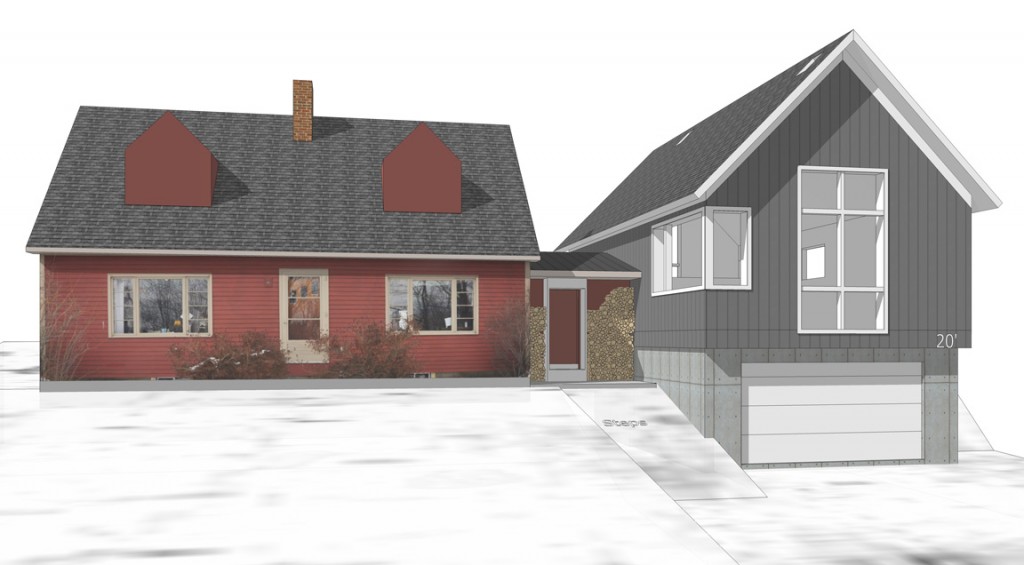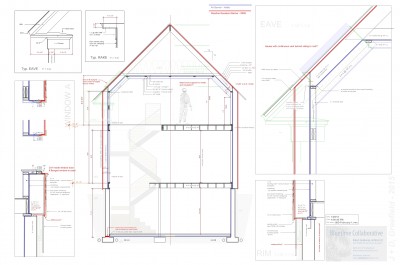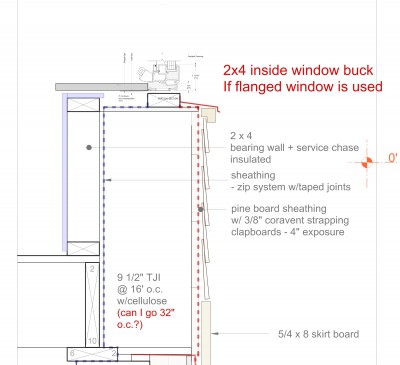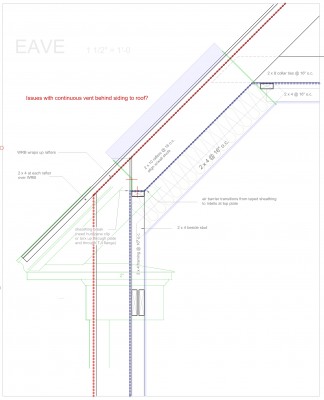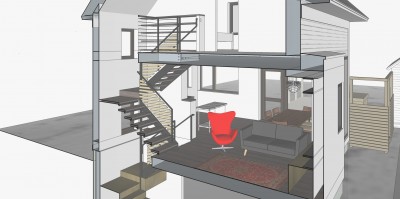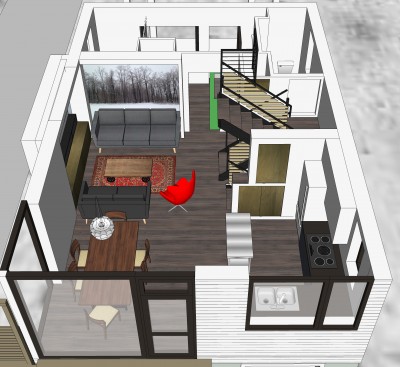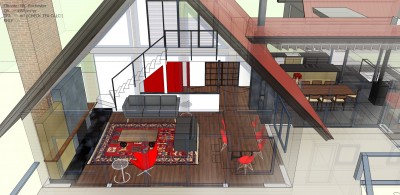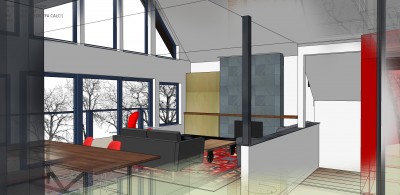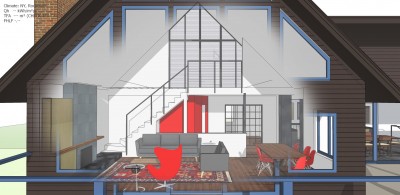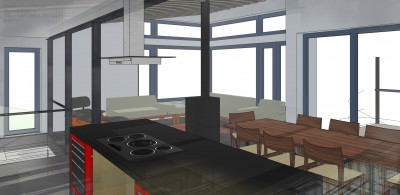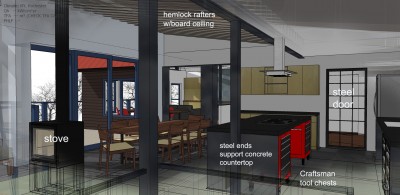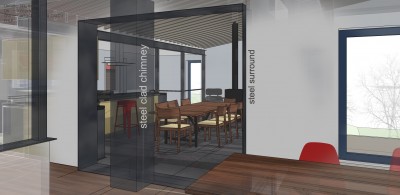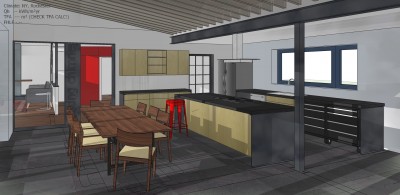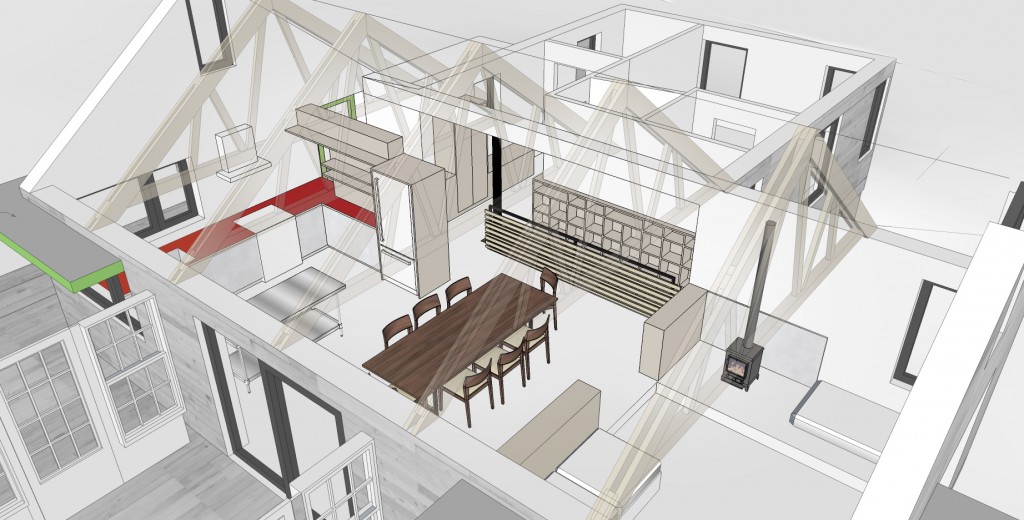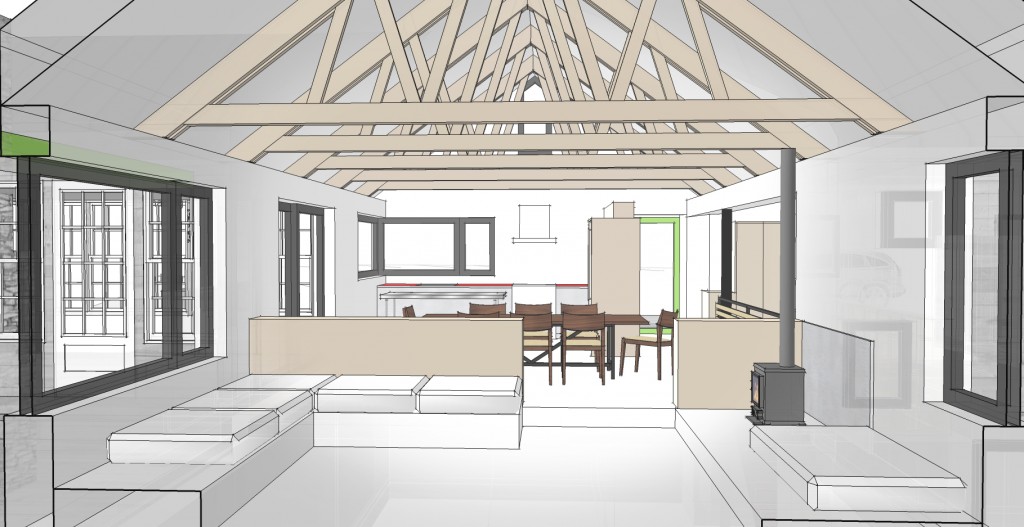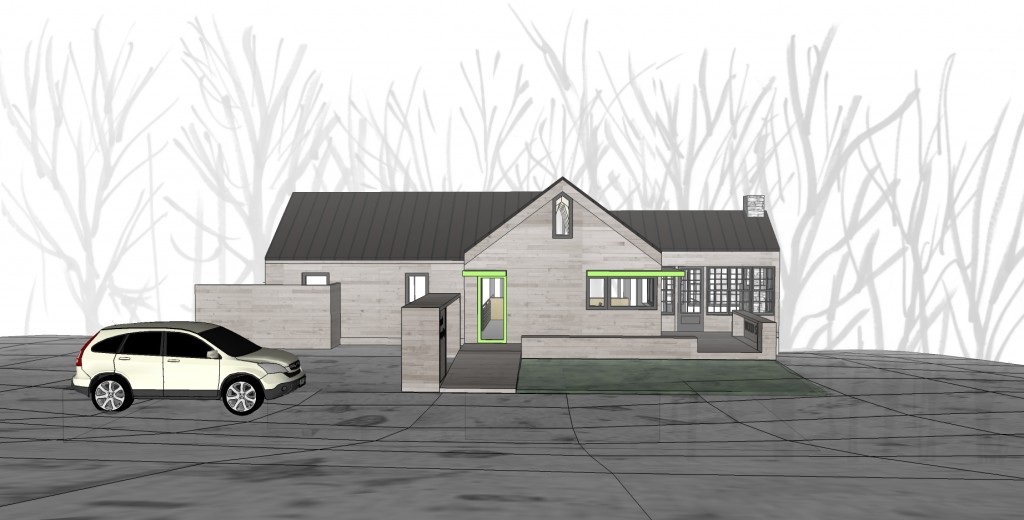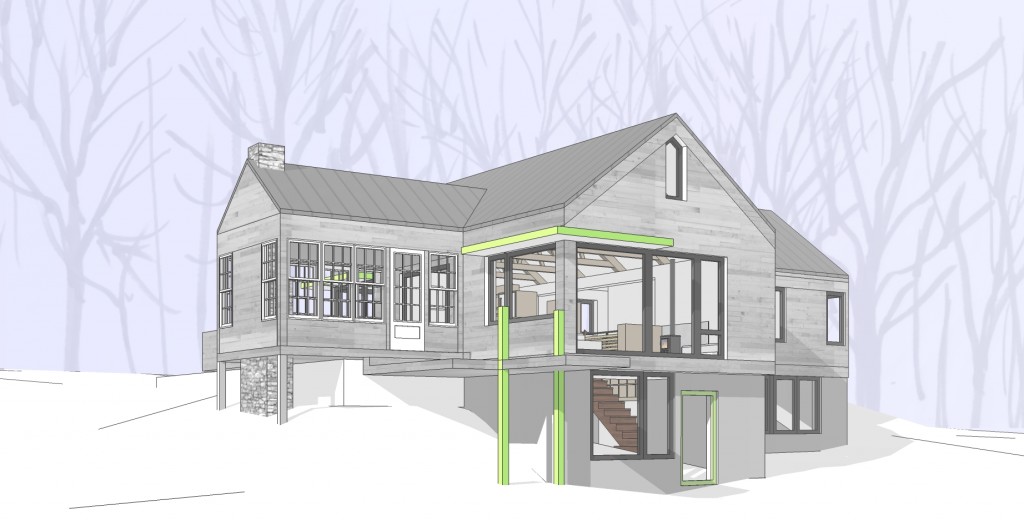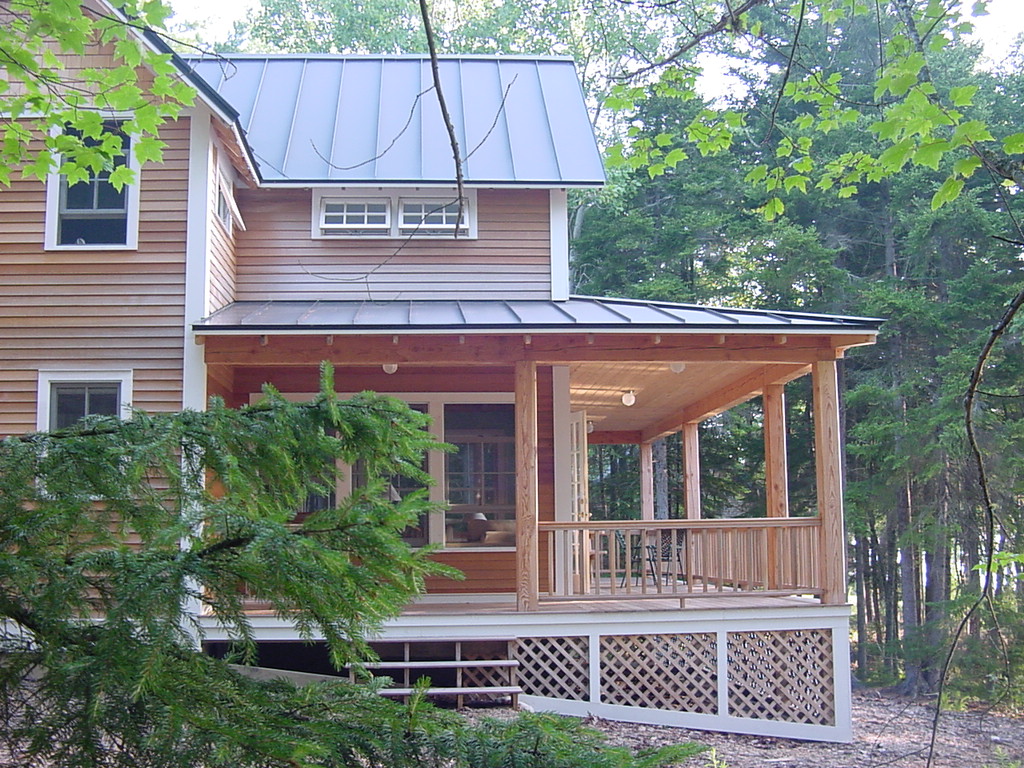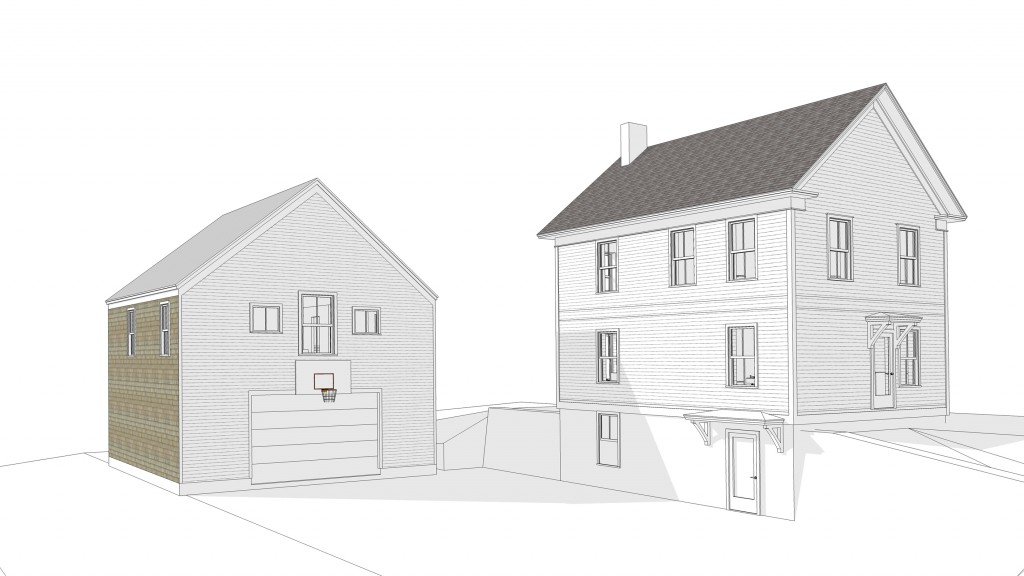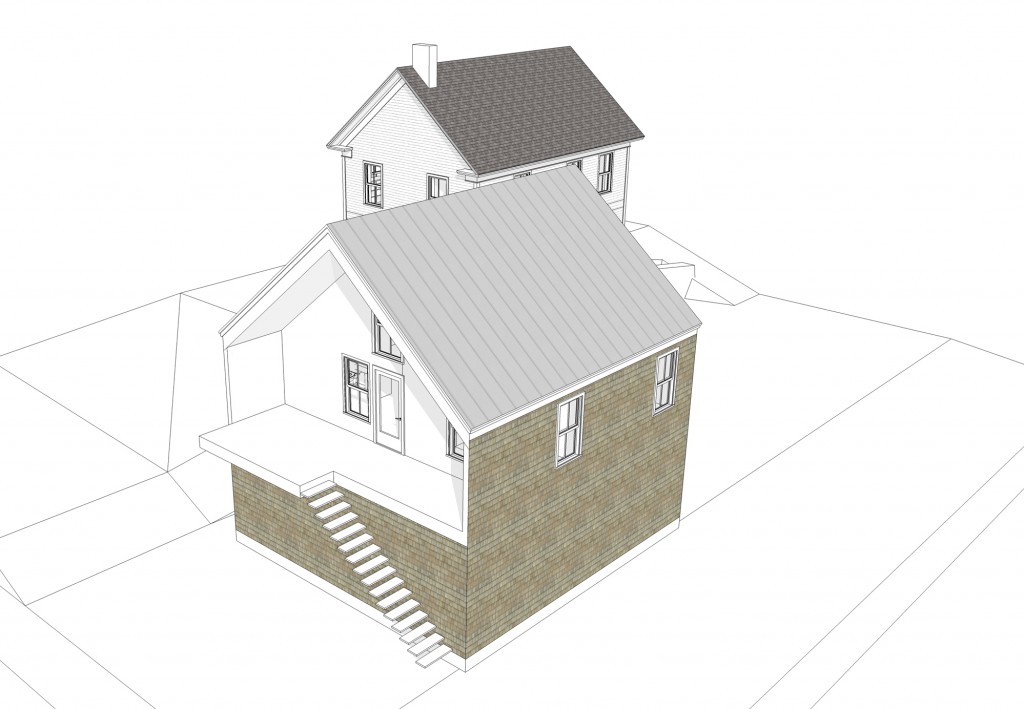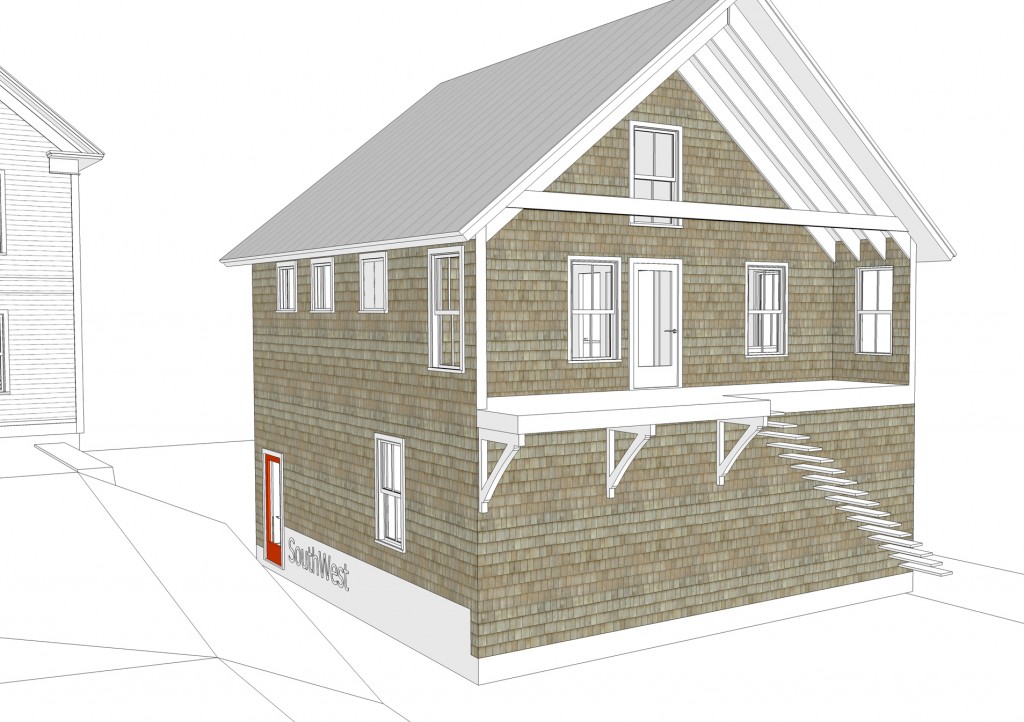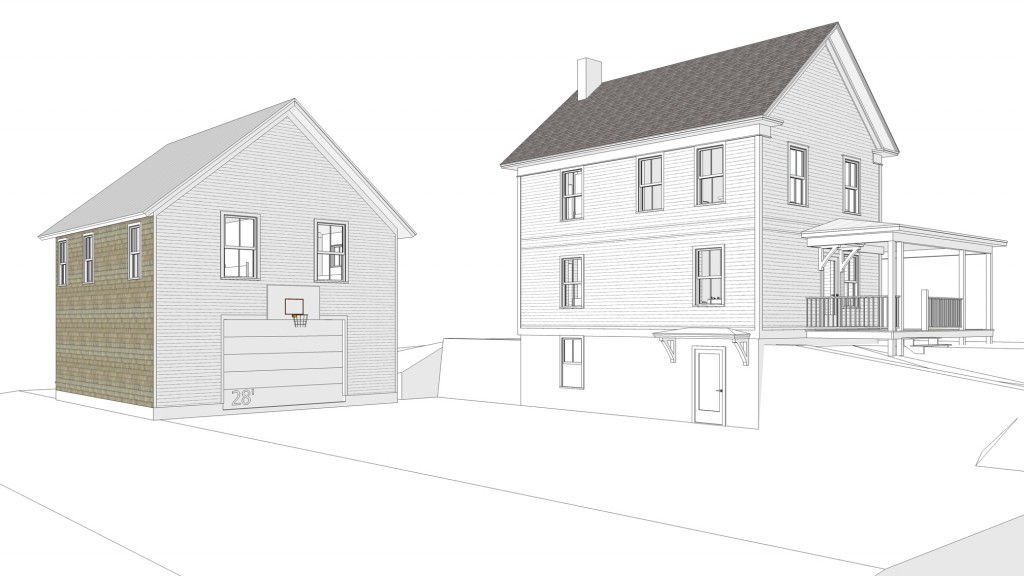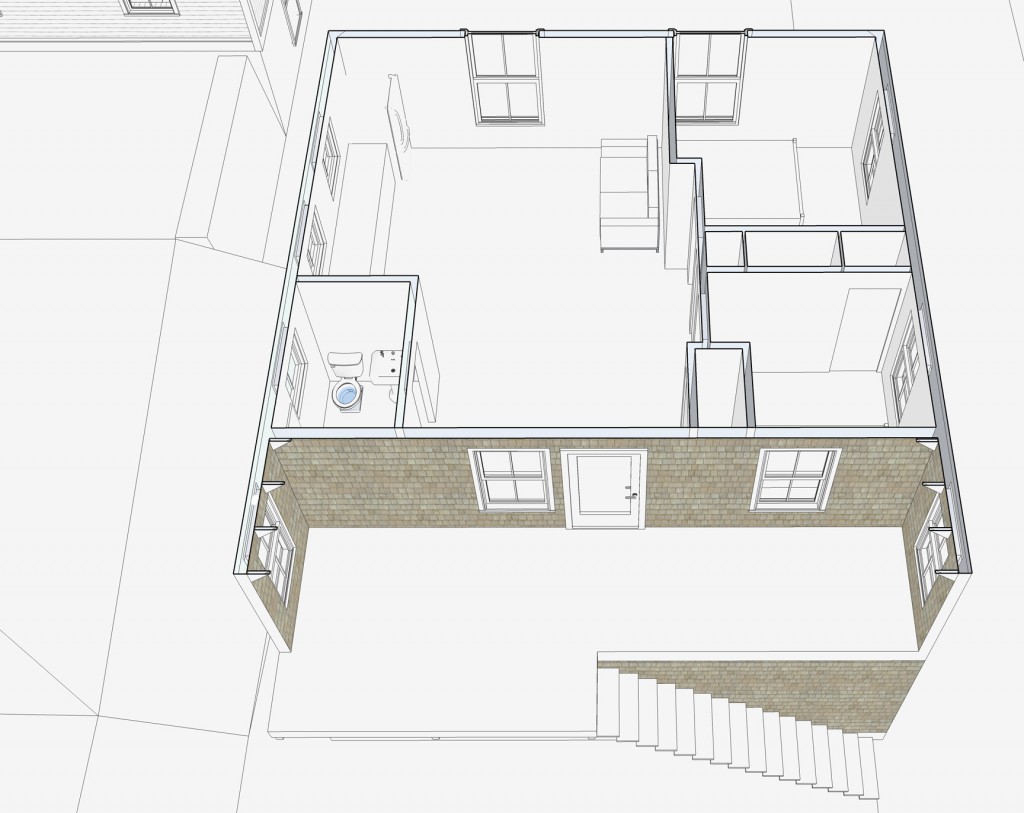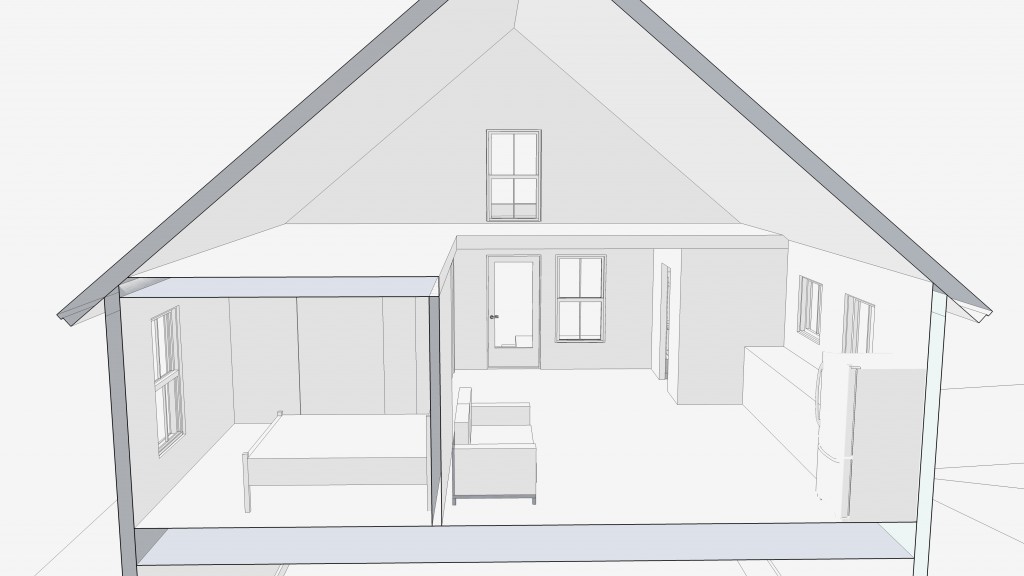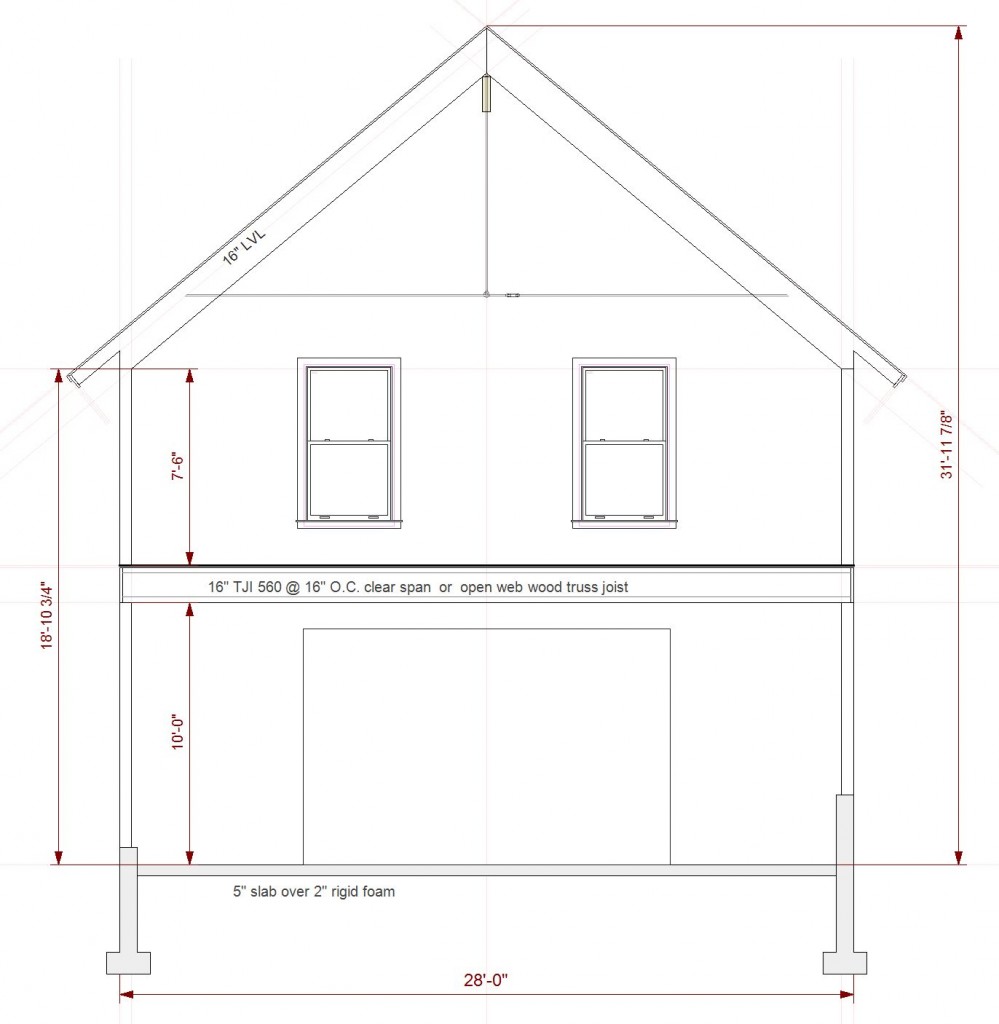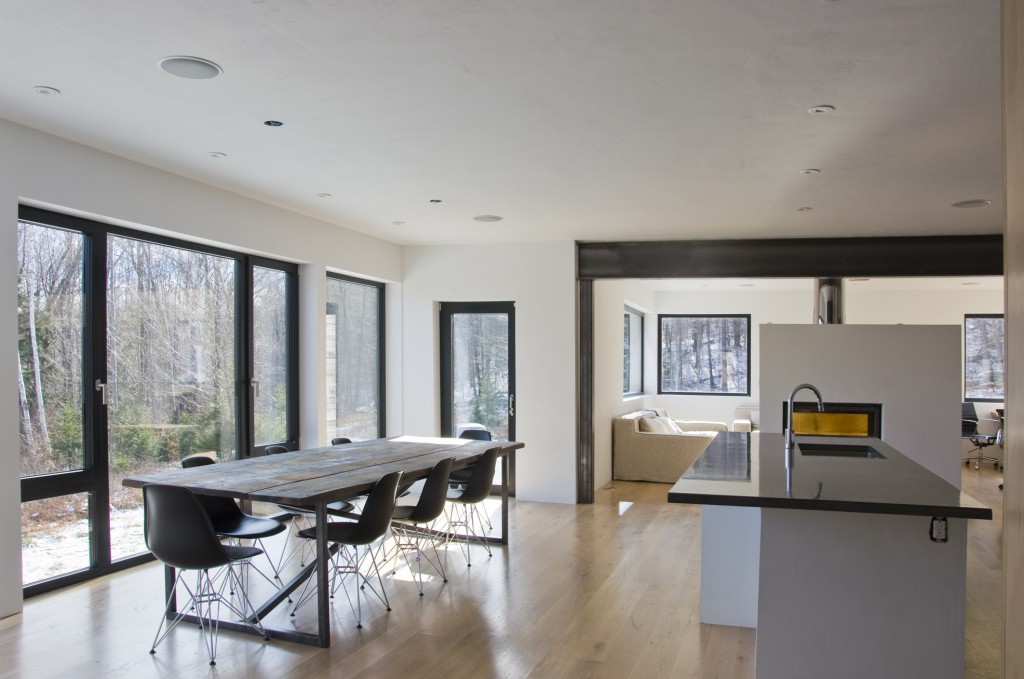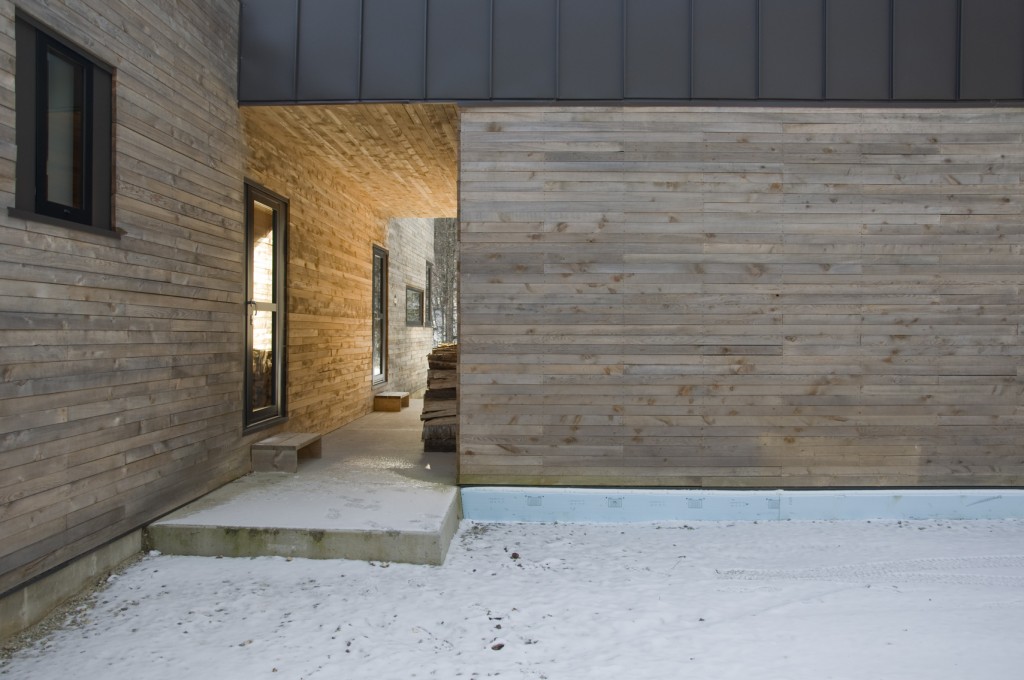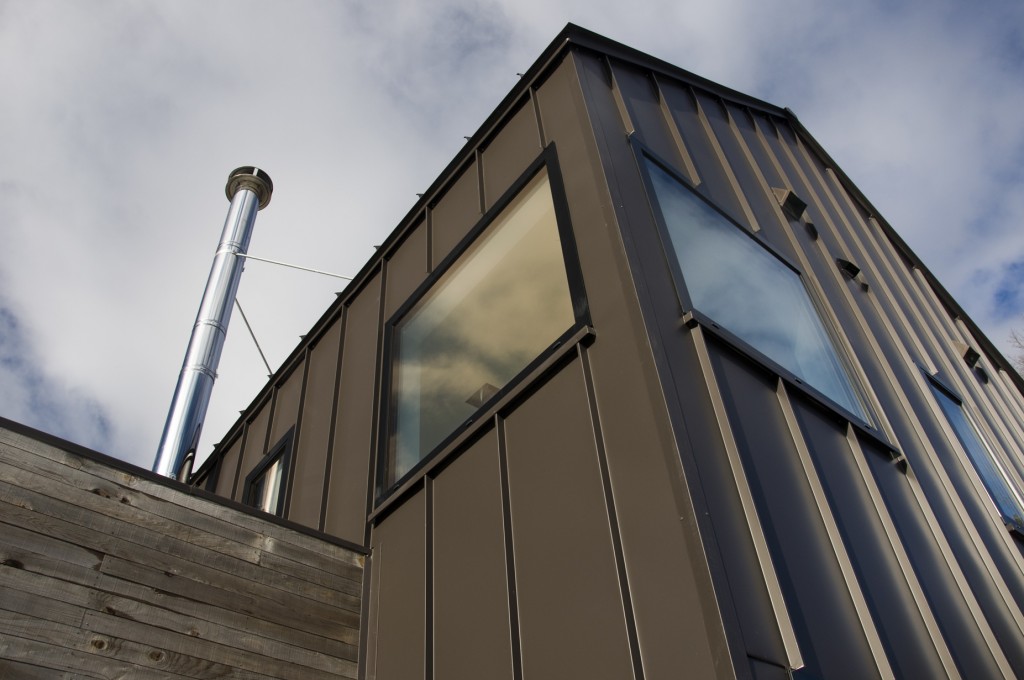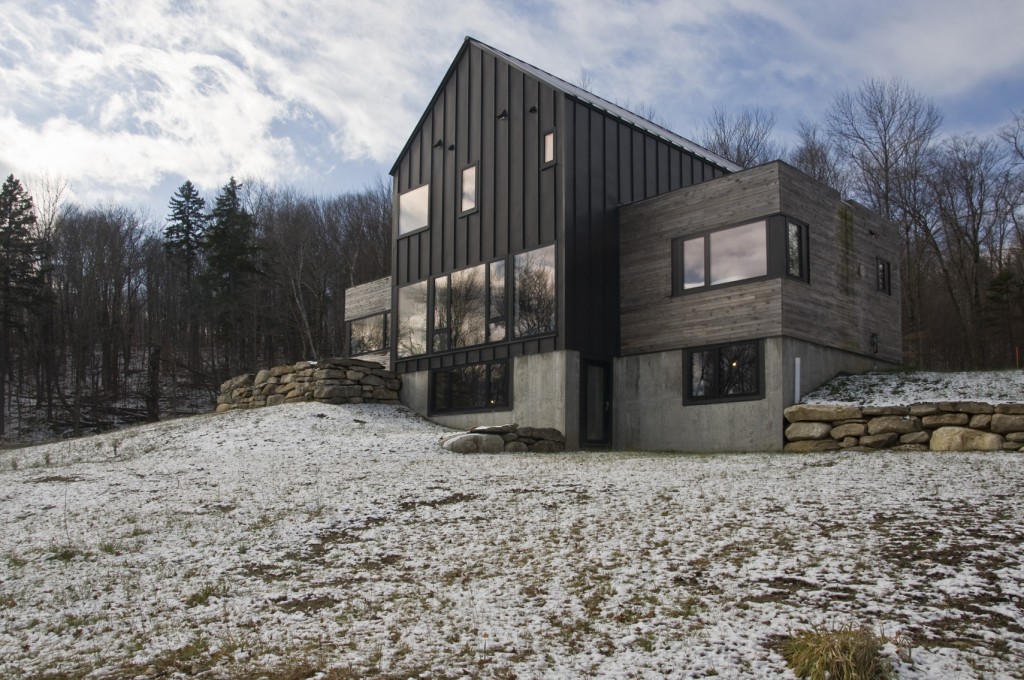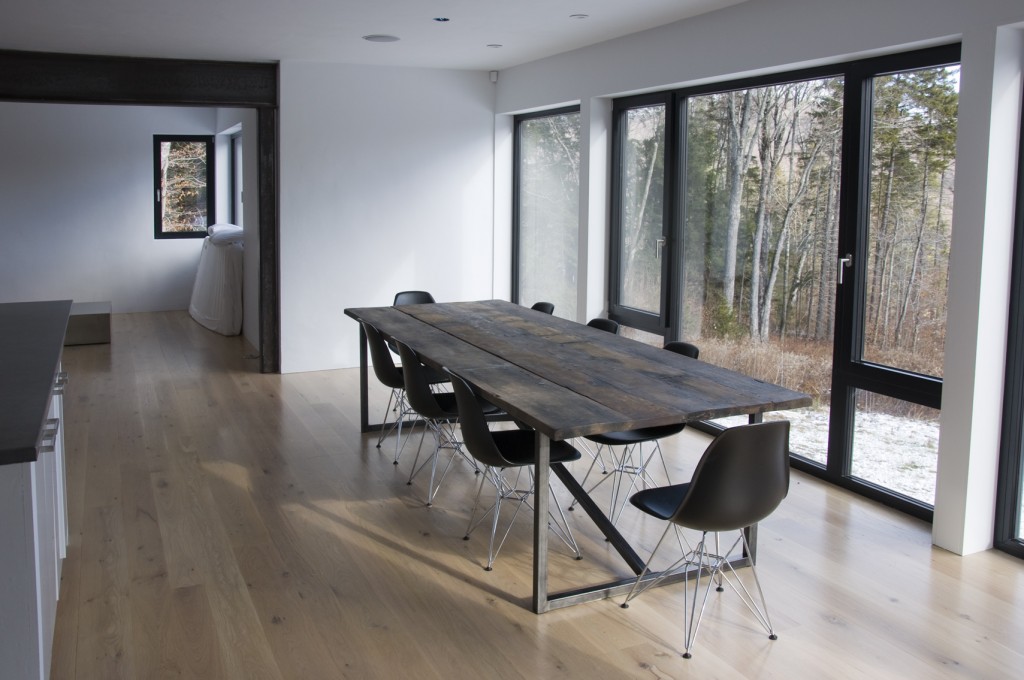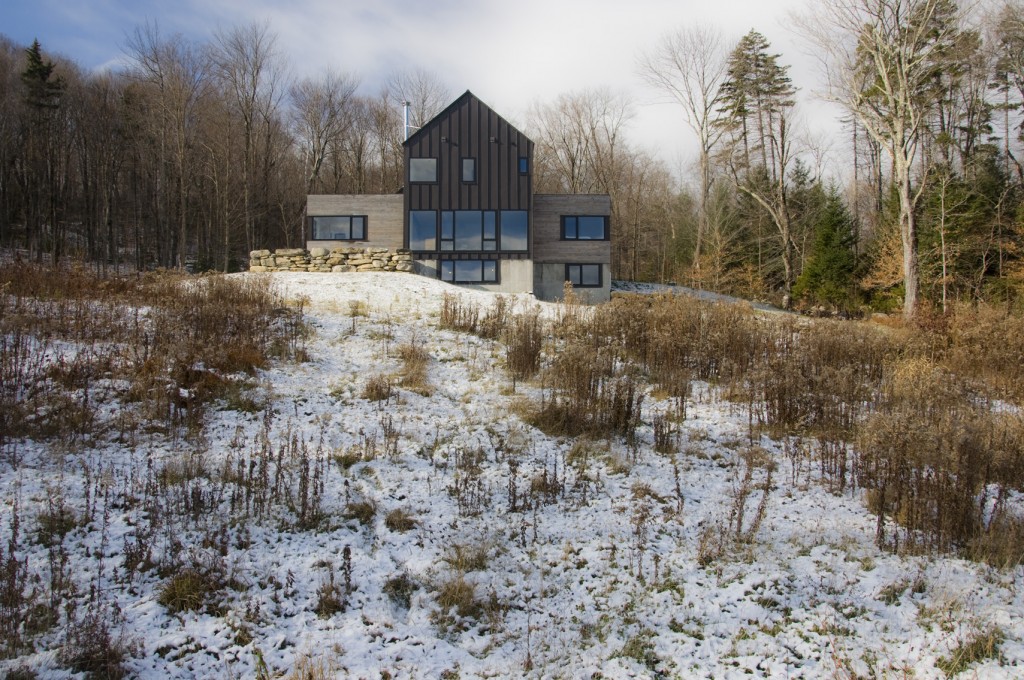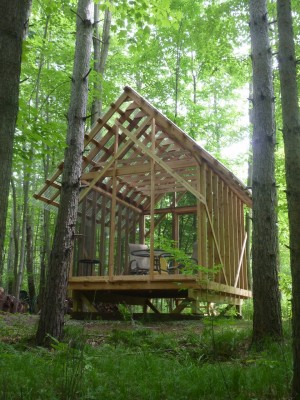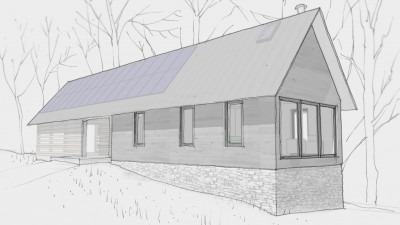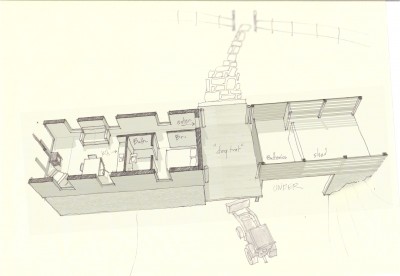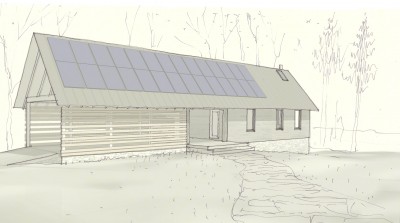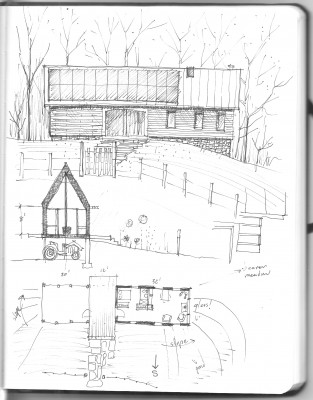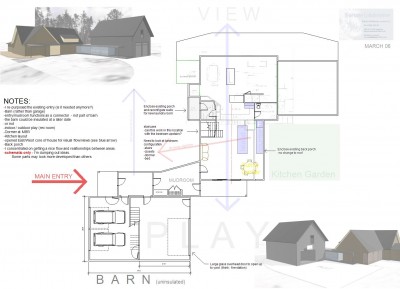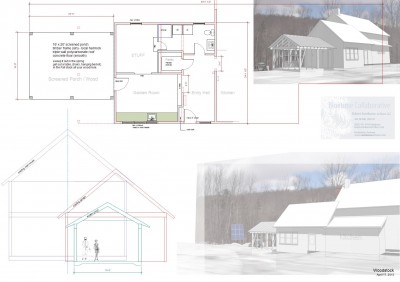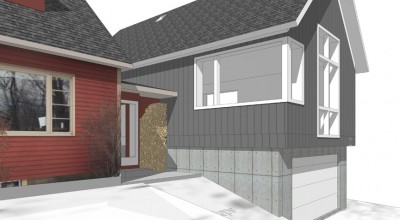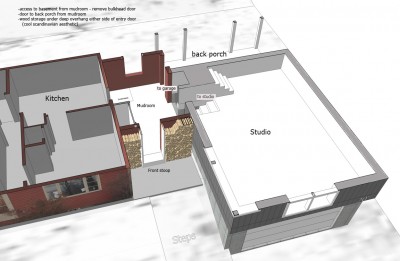I took a shot at writing down my own thoughts about the Greenfield project I’m doing for my wife’s folks. Sometimes I have so many half-baked ideas in my head that writing them down creates a jelling effect and helps me to clarify and focus my efforts. I’m planning on documenting this project to a much higher level than I have in the past, partly because we are assembling something of a dream team to get this done and partly because I am using this project to redefine how I work in order to bring my own practice to a higher level. I have encouraged the others to start writing as well and some of that will show up here on the blog as well for a more well-rounded perspective. We are currently exploring the feasibility of doing this house as a Passive house and seeking certification. I hope, as usual, to show what can be accomplished when a highly functional and customized plan is also an emotionally uplifting place to live. This projects continues my exploration into the emotional aspects of “home” and how to use architecture to augment and reinforce the emotional connection to place. Phew! What have I to gain from doing this project as a full-on Certified Passive House? So what if the winter heating bills drop from $75/month to $25/month? Is that really worth all the extra effort and expense to go through certification? We don’t know the answer to that yet. “Let me run some numbers” as the engineer or accountant would say. Passive house has cache. It attracts media. There is huge marketing potential. The clients (my in-laws) are understandably interested in that aspect of it - it relates to their son-in-law’s ability to financially support his wife and children. I want to do more of this type of work in the future and will I ever get such a good opportunity to gain exposure, attention and build a reputation that to do a very attractive and relevant project at this highest level… and market it to the greatest extent possible. I have seen that model propel other firms into the limelight so I am aware of what power and potential in inherent in this thinking. Otherwise- My own limited knowledge of Passive House indicated that this house as designed thus far could attain Passive House certification with minimal extra effort. I’m a Certified Passive House Designer – CPHD with the international credential but I have little practical experience. This project could be a great way to gain that experience. The most effort and extra money will probably be in soft costs – hiring someone with experience to do the energy modeling, advise on detailing and assist in the certification process. With this project we are also formalizing a fairly progressive project delivery process that I am realizing is crucial to creating high performance buildings. This represents the direction my own business model is headed in. I have, in the past, followed both the more traditional architect route where I work with clients to design and detail a project and we shop it out to builders. I have also worked (more often) in a more design-build model where the builder is integrated into the process from very early in the process. That has been my preferred method of project delivery but I am realizing that to provide the highest levels of service, I need to fill in some gaps. I can’t do everything and I don’t have expertise in everything so I’m bringing in people to help fill the traditional gaps. Subcontractors as well need to be on board as part of the team at a much earlier stage and need to be aware that they will be asked to perform at a very high level of professionalism. Part of my job is to make that as easy as possible for them through design and detailing. I am working on this project with Mel Baiser of Baiser Construction Management and Chad Mathrani of Vermont Natural Homes both of whom have training in passive house detailing and construction. They understand what it takes to reach that highest level of building excellence. And considerable enthusiasm to do so. We are pouring over the details as fast as I can draw them up to insure that no stone is left unturned. The process requires a high level of integration at this early stage in terms of product selection, integrated assembly, cost (and relative costs). Assumptions are challenged and vetted and everything will be put down on paper before the project is staked out on the site which is under considerable snow at the moment. We will maintain a process blog as part of Vermont Architect to provide a window into this process. Blog readers and Bluetime Collaborative facebook followers have already seen some early schematic design images of this project. Stay tuned.
Always know what and where your AIR BARRIER is.
I’m working on detailing out a smallish house in Greenfield, MA. We probably won’t go full Passive House on this but we will look at what additional costs and detailing it would take. And if we’re close…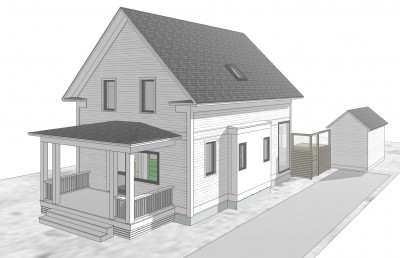 We are doing some novel (to me) stuff for the shell of the house that, I suspect, will become more standard practice for me in years to come.
Here are some “progress print” detail drawings from the plan set. My drawings tend to look a bit different than most architect's drawings due to two things: The time I spent wielding a hammer and trying to interpret my own drawings and the fact that I have worked as a sole practitioner for so long and have developed my own graphic style. I should add to that a third thing – my knowledge of building science informed best practices.
We are doing some novel (to me) stuff for the shell of the house that, I suspect, will become more standard practice for me in years to come.
Here are some “progress print” detail drawings from the plan set. My drawings tend to look a bit different than most architect's drawings due to two things: The time I spent wielding a hammer and trying to interpret my own drawings and the fact that I have worked as a sole practitioner for so long and have developed my own graphic style. I should add to that a third thing – my knowledge of building science informed best practices.
The first thing you will notice about these drawings is actually the most important thing. The red and blue dotted lines represent the weather resistant barrier and the air barrier respectively. If your drawings don’t have at least the air barrier called out in the sections, (and continuous around the thermal envelope) The drawings are incomplete. I have been getting picky in my detailing about how to make the air barrier both easy to achieve and durable. In my opinion, relying on painted sheetrock to serve as an air barrier just doesn’t cut it – certainly not for the next 100 years.
Many builders and architects in the Northeast US are still building 2x6 walls with fiberglass batts and a poly vapor barrier. That’s how I learned to do it when I was just starting out in the 90’s. I also opened up a number of walls built that way that were full of mold.
-
Good
builders don’t build this way anymore. Check the Building Science Corporation website for some pictures of what can go wrong.
One part of building science is probability and statistics. I often hear builders say “I’ve always built that way and I’ve never had any problems” - that you know about. But those builders are only looking at 50 or 100 projects. Luck plays a part here. What happens when you look at thousands or even tens of thousands? You start to see some patterns emerge and you start to see the luck factor drop out of the equation. You are able to formulate some best practice standards for a number of things including durability, air quality, energy use and even catastrophic failure. I prefer to work with builders who are informed about building science and involved in the discussion.
That’s easy here in the Southeastern Vermont area home of Building Green area, home of Building Green and SEON which sponsors a well-attended monthly building science discussion group and learning circle. – If anyone wants to get something like this started in their own community, send Guy an email at the address in their website.
I owe it to my clients to help them get the best constructed project possible. That, in addition to the most functional, aesthetically appropriate, finely crafted project possible.
– Oh and the budget thing too –
Detailing such as represented in these drawings is also very much about budget. The goal is to bump up the levels of insulation, air tightness, r value of windows etc. so that we can eliminate the traditional boiler and heat distribution system in favor of a minisplit heat pump which is more of an appliance than a system and dramatically less expensive. (I think this link is a GBA pro only link - subscription) For those without a subscription try this alternative Ideally, it becomes a wash cost wise but with the added bonus of very low monthly heating and cooling costs. Those savings alone can represent hundreds of dollars per month.
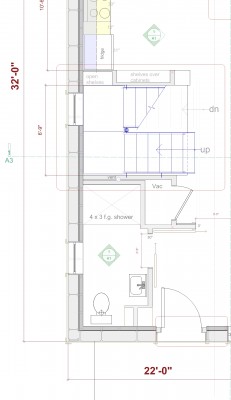
A Smallish House in Massachusetts
I am working on a 1400 s.f house in Massachusetts. Given that the walls are over a foot thick, the actual square footage is quite a bit less (about 1200). The extra insulation (and cutting edge building science) allows us to forgo a heat system other than a relatively inexpensive minisplit - and monthly fuel bills. Here are a few images of what I'm up to. no fancy rendering for now, just the Sketchup model and some Vectorworks CAD drawings.
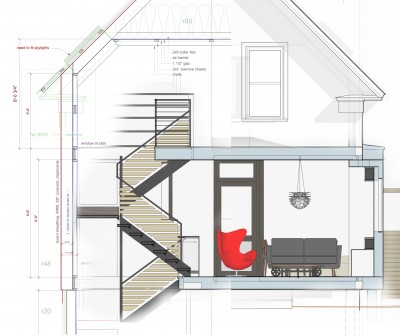
I spent a fair amount of time detailing the steel and wood stairs in Sketchup as I have found that is the only way for me to really figure out every nut and bolt and refine the design to the level that I am comfortable with before construction drawings. I like to approach the stair as sculpture with every piece exact and connections "just so". Thus I am able to design something that is quick and easy to assemble with just the right amount of "fudge space" built in.
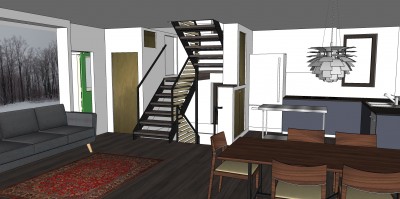
The floor plans have shrunk and simplified from the last version becoming more functional and comfortable.
Perry Road House photos
Some photos from the Perry Road project which is sitting empty and unfinished and for sale UPDATE: SOLD!- (It's hard for people to earn a living around here so the owners made the decision to move to where they could work.. for money)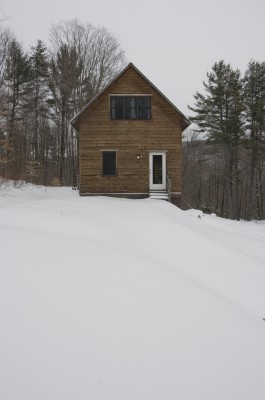
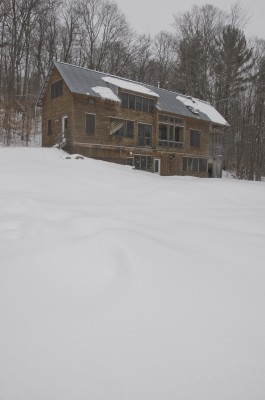
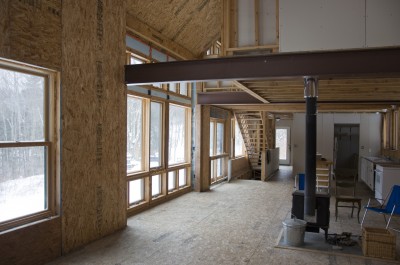
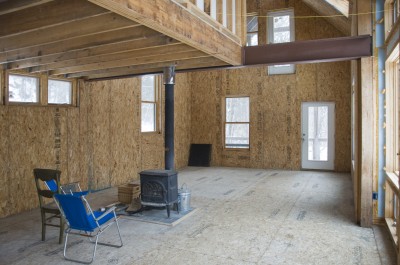

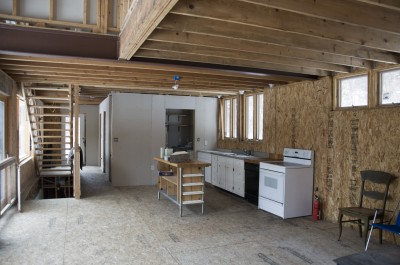
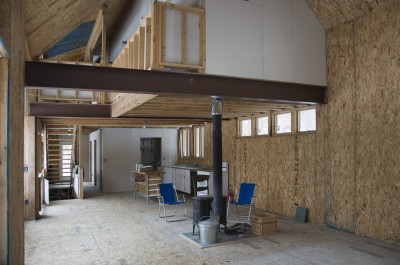
This is a Structural Insulated Panel (SIP)house on and Insulated Concrete Form foundation (ICF) The windows are Marvin Integrity - there are a lot of them although they seem all very logical and needed. Too bad they are not triple glazed. The basement slab is piped for radiant heat, there is an air exchange system, two bathrooms, (plumbed for a third) up to 5 bedrooms, porch and sleeping porch. There is also a lot of land with a stream and waterfall.
Mod Ski Home in VT - interiors
I'm working on fleshing out the interiors for this addition renovation project here in Vermont.
G-Jan-4 from Robert Swinburne on Vimeo.
Scandinavian influence in Vermont
AmesHill October29 from Robert Swinburne on Vimeo.
This one will have a bit of a rustic Scandinavian feel to it. And be super-insulated of course.
Progress on Mod ski home in Vermont
One of the projects I'm working on is an addition to and renovations of a ski home in Vermont. The main house is well built and and other than a maroon and pink bathroom and rather 80's finishes, we are not doing anything too major to it.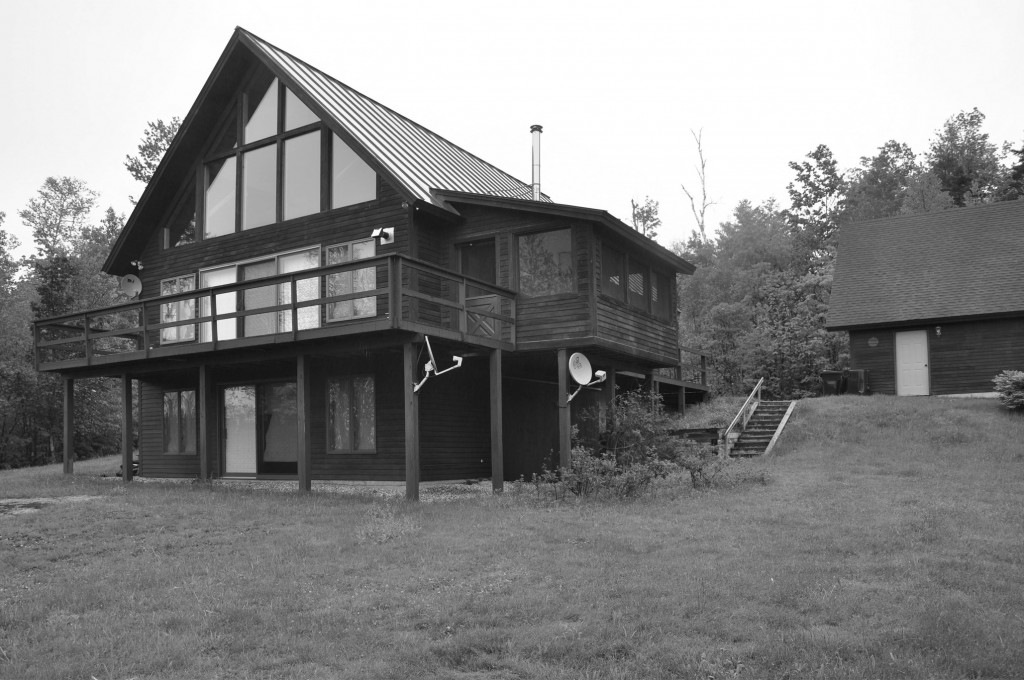 We are locating a family room addition between the existing house and garage which will provide a much nicer kitchen and living area plus additional bunkrooms and a multi-user bath on the basement level. I'm sticking with the dark clapboard and red standing seam roof of the existing as I think it provides a nice base for some fun things to happen with color at the doors and windows.
We are locating a family room addition between the existing house and garage which will provide a much nicer kitchen and living area plus additional bunkrooms and a multi-user bath on the basement level. I'm sticking with the dark clapboard and red standing seam roof of the existing as I think it provides a nice base for some fun things to happen with color at the doors and windows.
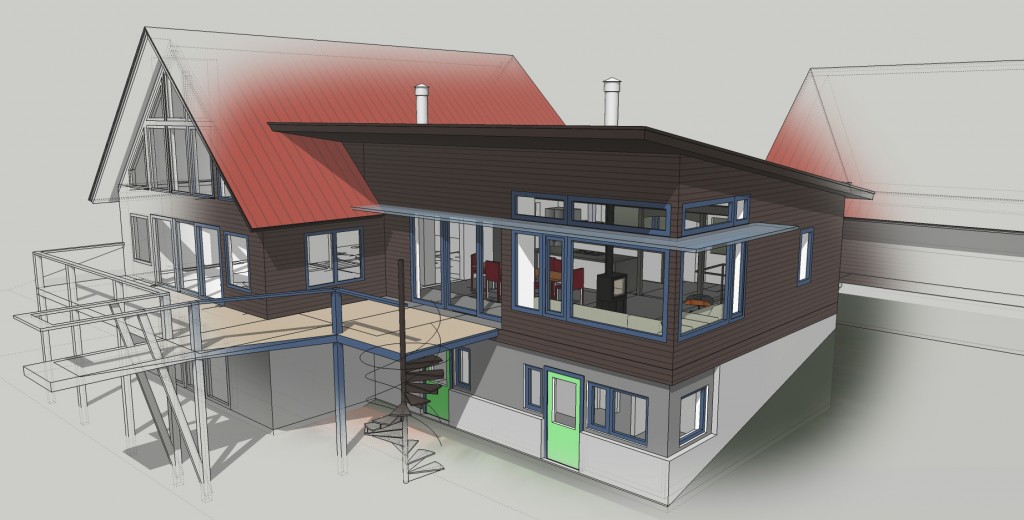
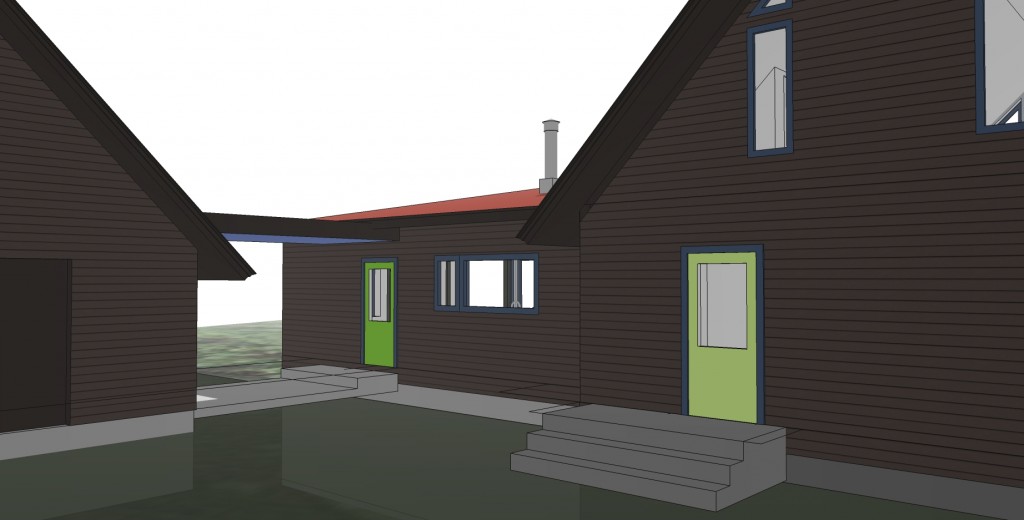
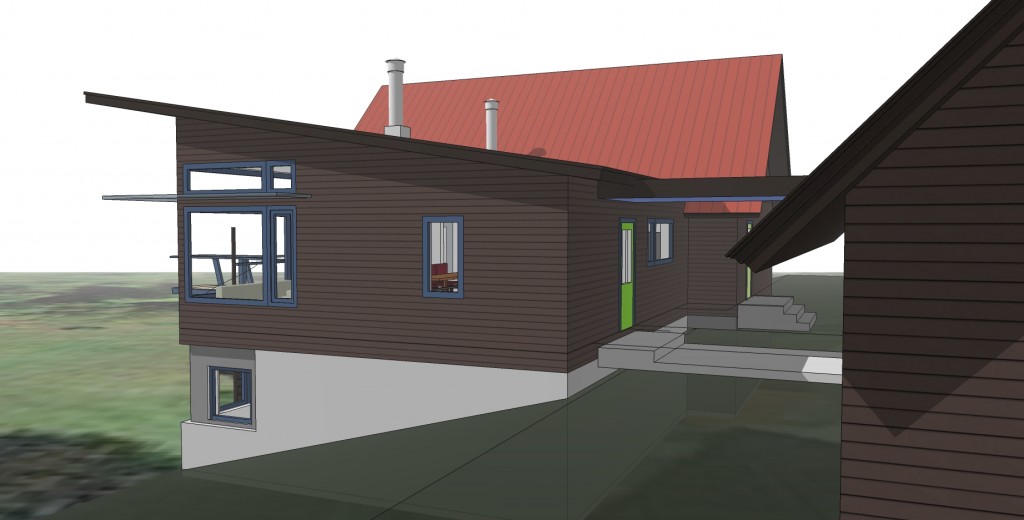
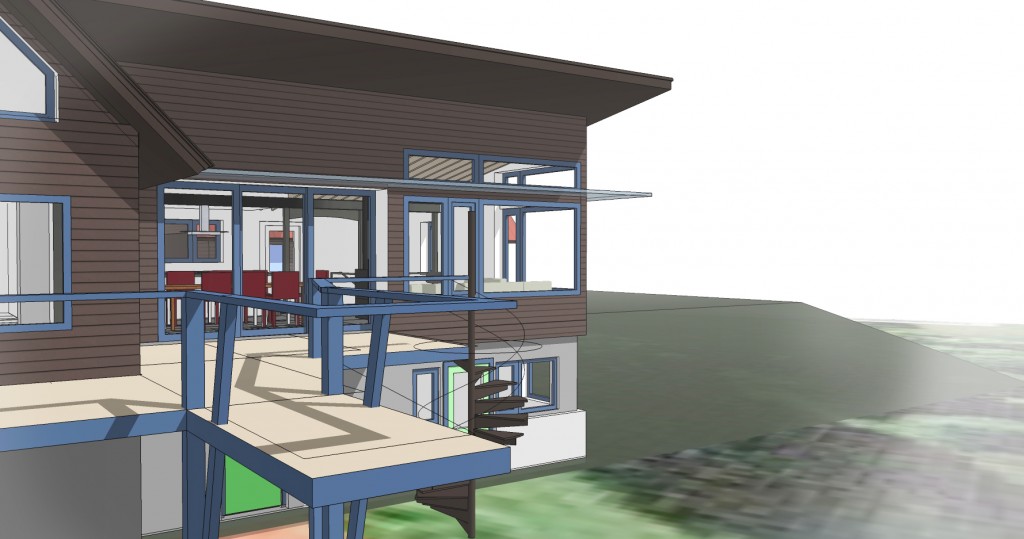
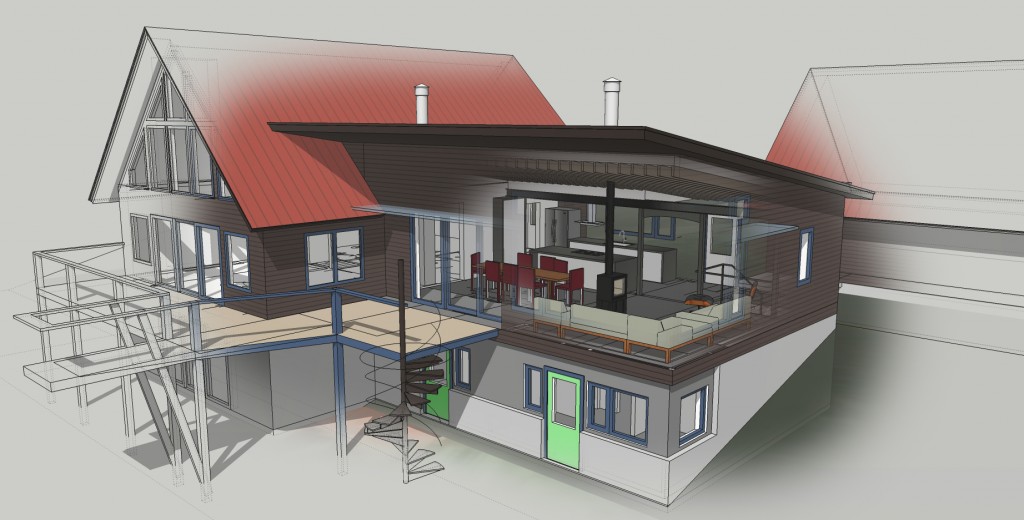 I am using big windows, wood, steel etc to create a warm, modern and relaxed space for lots of people to be in.
I am using big windows, wood, steel etc to create a warm, modern and relaxed space for lots of people to be in.
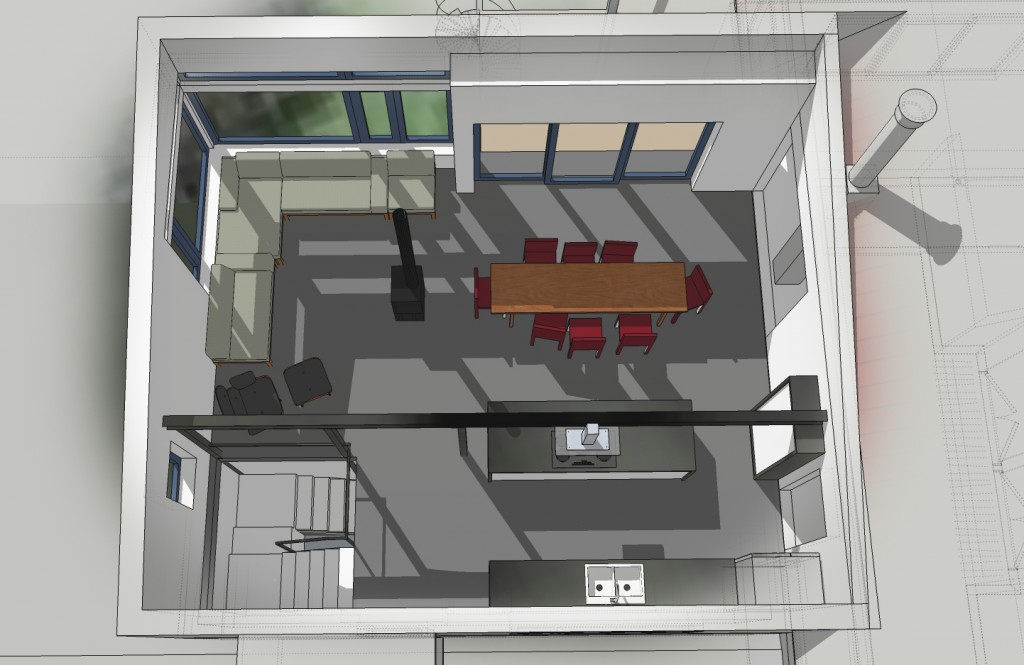
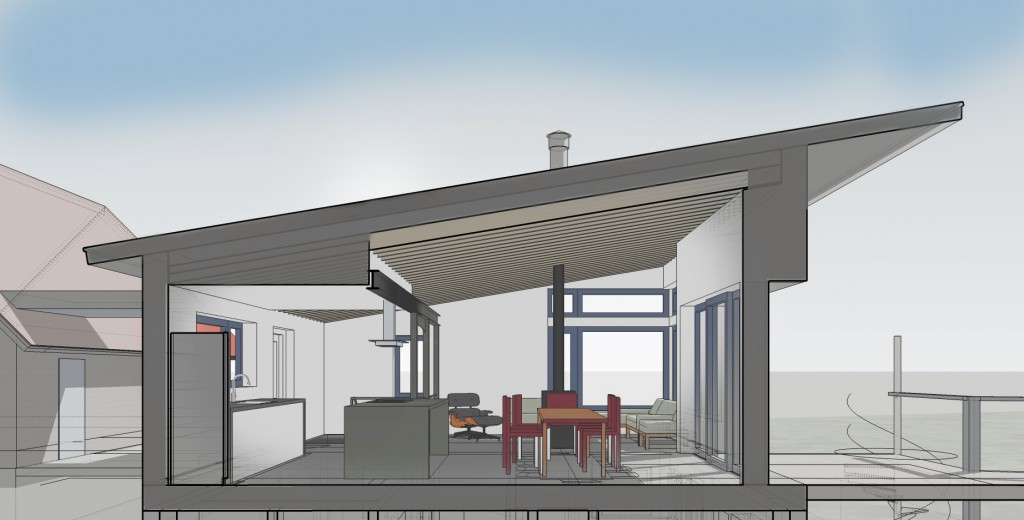 Here is the current plan:
Here is the current plan:
 and I put together a few videos of the sketchup model
and I put together a few videos of the sketchup model
Steel Stair retrofit
Here is a lovely little project I'm working on. The existing steel spiral stair shown here is tight and impractical as well as in a poor location for the floor plan of the house.
I designed a fairly minimalistic steel stair which will be installed in a different location and will be much easier to negotiate. The design process included trying every solution possible in rapid fire succession to make sure I wasn't overlooking anything better. Then developing this with a sketchup model just enough to see how it could look in the space.
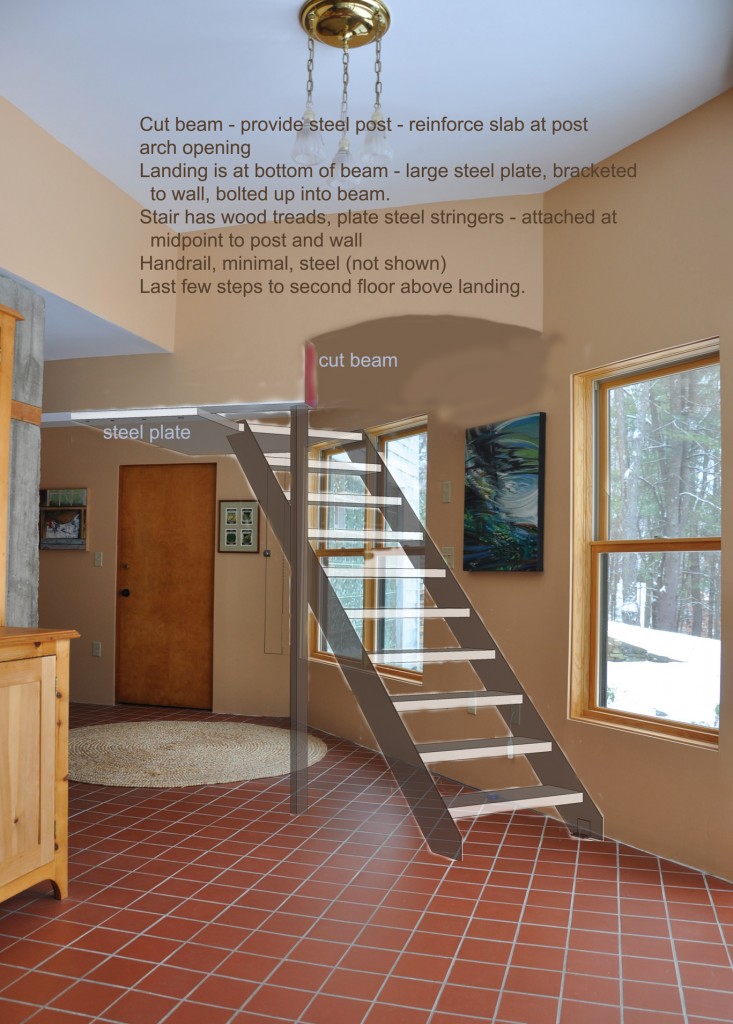 Then back to the site for more careful measuring and consideration. Then These detailed drawings. The design and detailing allow for a fair amount of "fudging it" and flexibility in adjustment as an inherent part of the design. - I expect to get some good feedback from the steel fabricator as well.
Then back to the site for more careful measuring and consideration. Then These detailed drawings. The design and detailing allow for a fair amount of "fudging it" and flexibility in adjustment as an inherent part of the design. - I expect to get some good feedback from the steel fabricator as well.
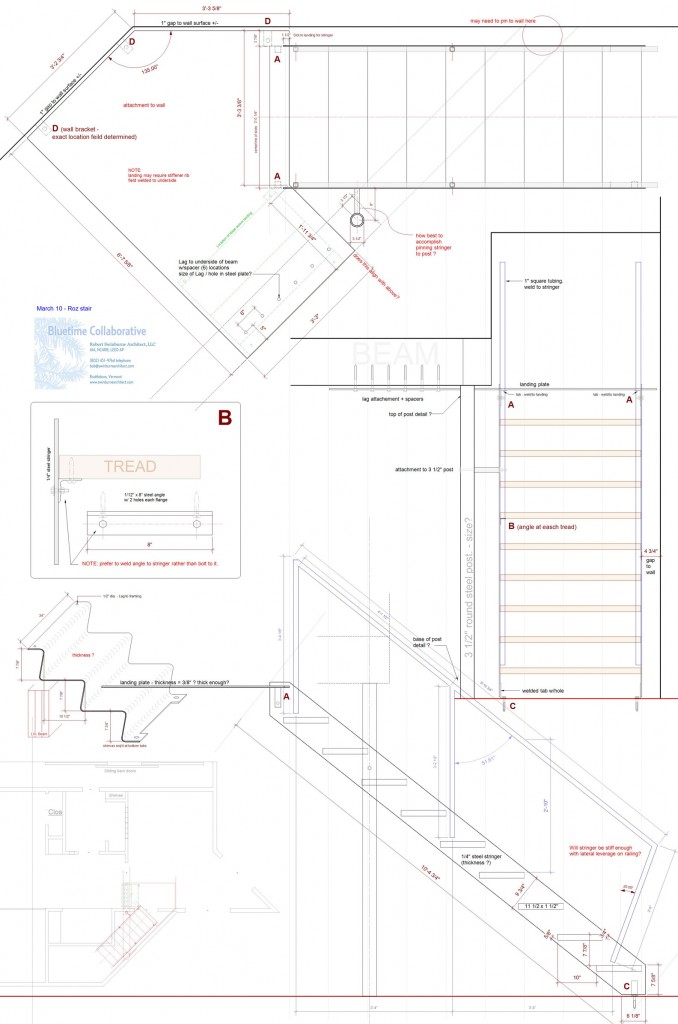
Brattleboro Tiny House - from above, during a snowstorm
Vote on Pinterest - 2013 Howies
Vote for this house plan on Houseplans.com for a 2013 Howie Award. I think you do it on Pinterest by pinning and sharing HERE Jan 22 edit - The pinterest voting is only for the people's choice award and not related to my plan which is one of the finalists for best small house plan.
Thinking ahead
HA! This happens a lot. I just got a call from a contractor who wanted to modify roof trim on an addition to make it both easier and he thought it would look better. Which it would except that a future phase of the project involves adding a porch in such a way that the frieze on the addition becomes the casing for the porch beam. The continuity was important to the client to calm that side of the building. In the image, the red over the window is where the contractor wanted to case the window with 1 x 4 thus creating a narrower frieze board. When that line got over to the porch on the left it would have to drop down to case in the porch beam. Not smooth. On the windows above, the casing for the windows is independent and below the frieze which is preferable, however, I was setting the three lower windows as high and large as I could over a countertop to maximize light into a deep room. We were squished also in terms of the roof in order to get it well under the upstairs windows. Especially over the porch area. The contractor's solution would be fine and what I would have designed were it not for the open porch to the right.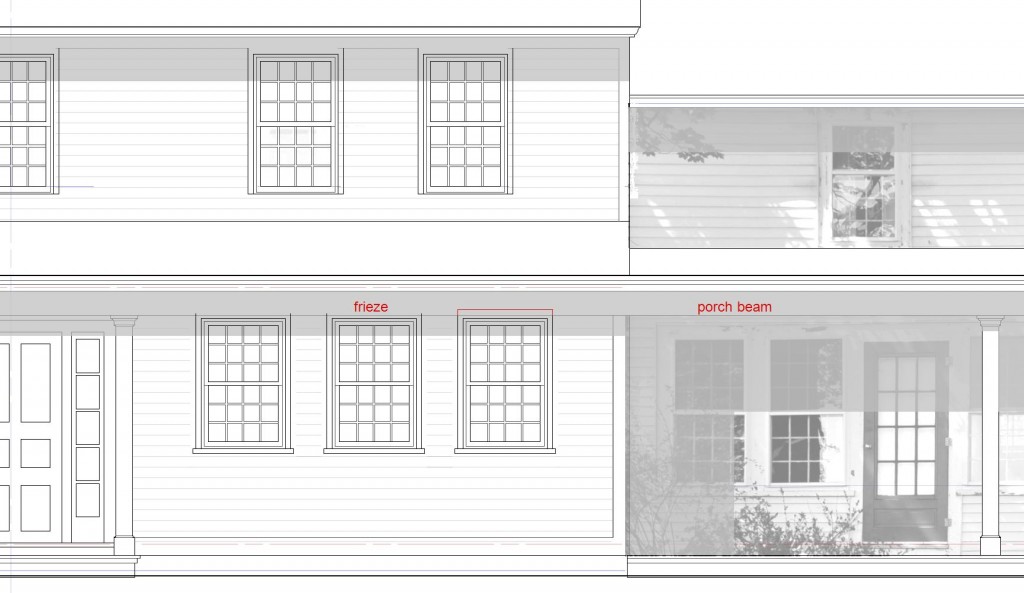 I found, during the years I worked as a carpenter, that it was easy to concentrate on the task at hand and lose sight of the overall picture. As a designer, sometimes I'll make a foundation more complicated in order to make framing or trim more simple. Or sometimes I'll do things in a more complicated fashion due to an aesthetic historical precedent. (Isn't much of traditional design like that?) Sometimes I will complicate things to make the end result look simple. Sometimes I complicated things just because I can be really really picky.
I found, during the years I worked as a carpenter, that it was easy to concentrate on the task at hand and lose sight of the overall picture. As a designer, sometimes I'll make a foundation more complicated in order to make framing or trim more simple. Or sometimes I'll do things in a more complicated fashion due to an aesthetic historical precedent. (Isn't much of traditional design like that?) Sometimes I will complicate things to make the end result look simple. Sometimes I complicated things just because I can be really really picky.
Recent Design Work

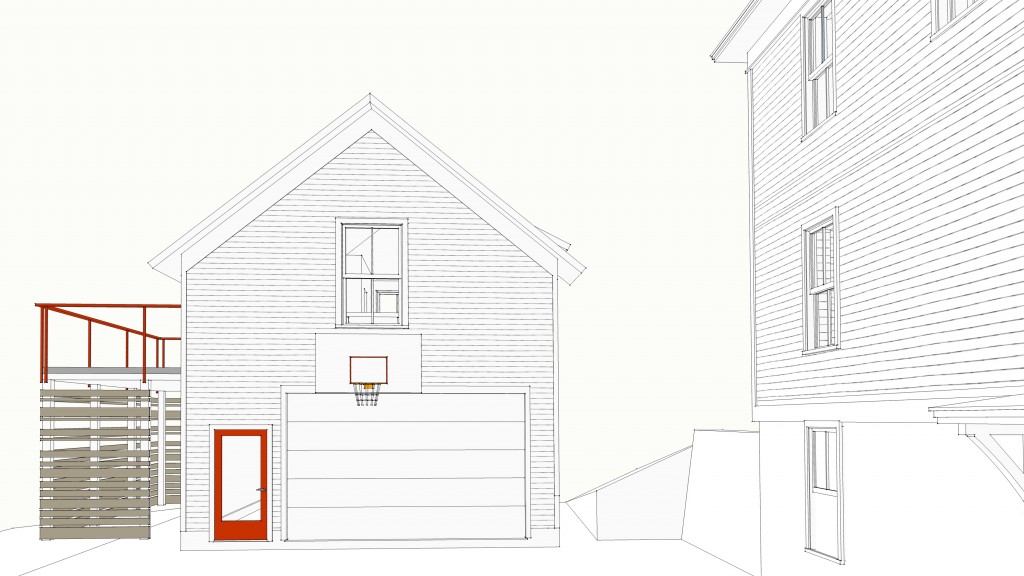
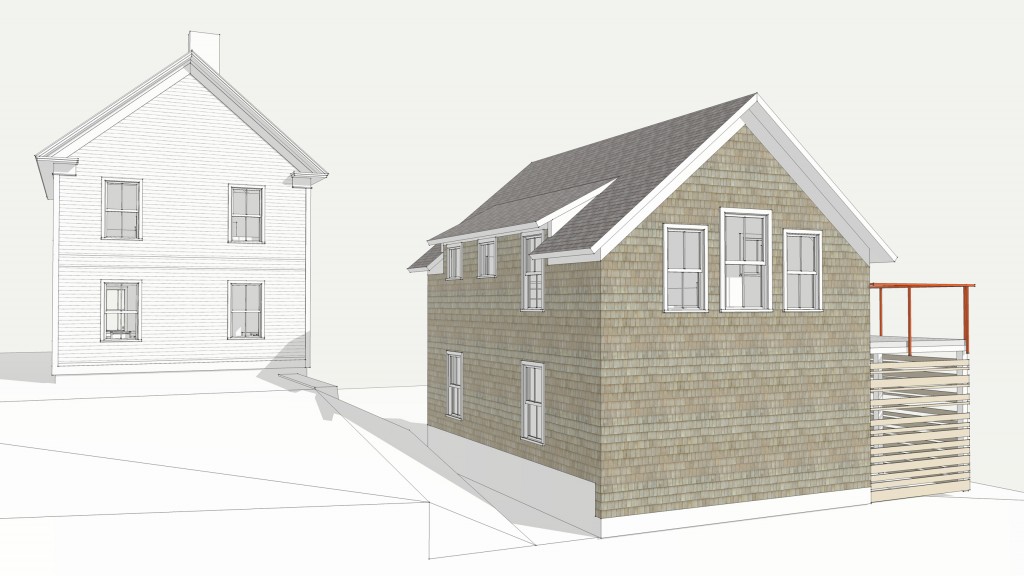
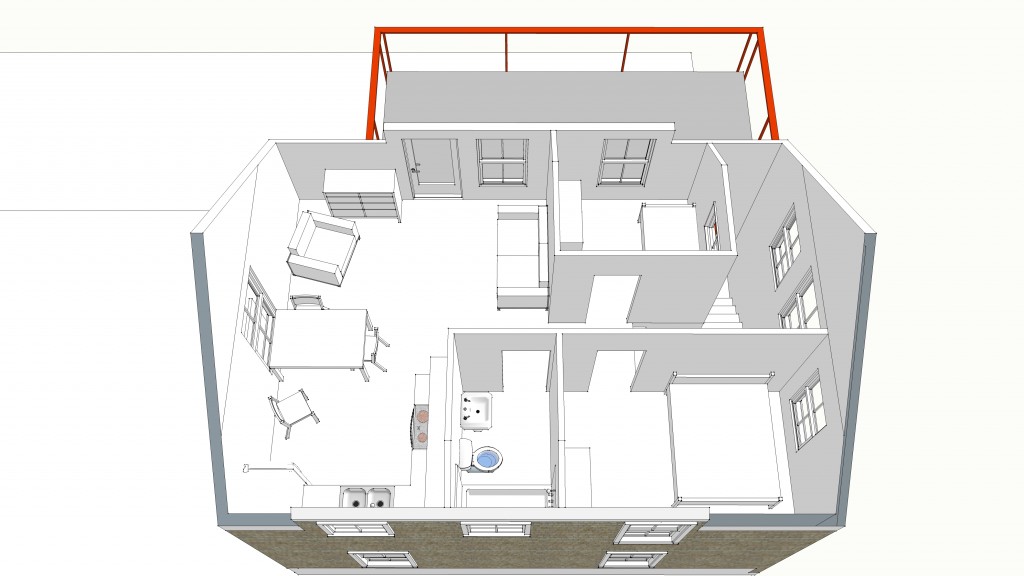
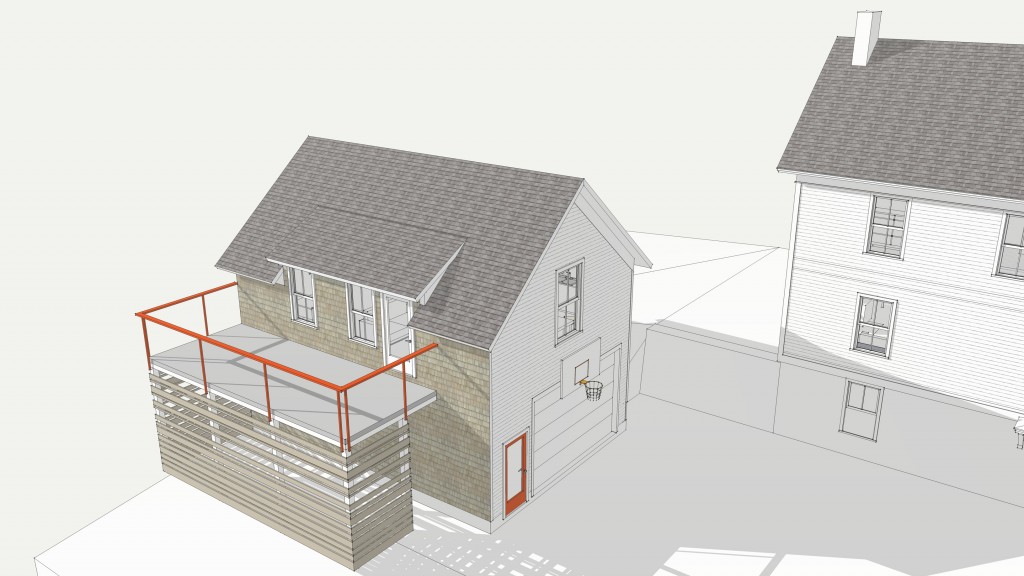 Then I looked at a larger barn with more "clipped" New England eaves. Need to work on the front windows. Traditional barns often utilized some asymmetry here but more modern barn builders seem to stick rigidly to symmetry. The side windows are not good however. -see last picture. Perhaps two large windows
Then I looked at a larger barn with more "clipped" New England eaves. Need to work on the front windows. Traditional barns often utilized some asymmetry here but more modern barn builders seem to stick rigidly to symmetry. The side windows are not good however. -see last picture. Perhaps two large windows
Photos! Stratton Modern is nearly complete
I visited a recent ski home project near Stratton mountain ski area to get some photos. The house is nearly complete. As usual there are things I would do differently next time and things that didn't quite follow the drawings but that's for me to know and no one else to notice. I really like the "presence" of this house. The coloring and materials are first rate. It is very "touchy feely" and very responsive to the changing light as the clouds raced across the sky. I can't wait to do the local, green hemlock over Solitex Mento again. and better. Click on the photos for big screen enjoyment.
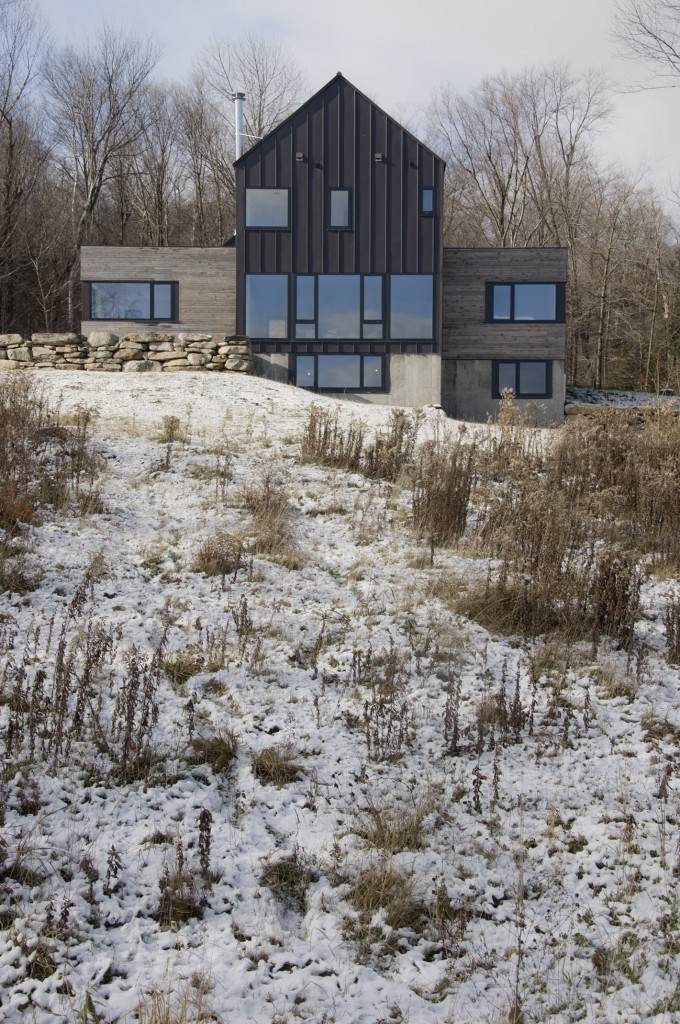
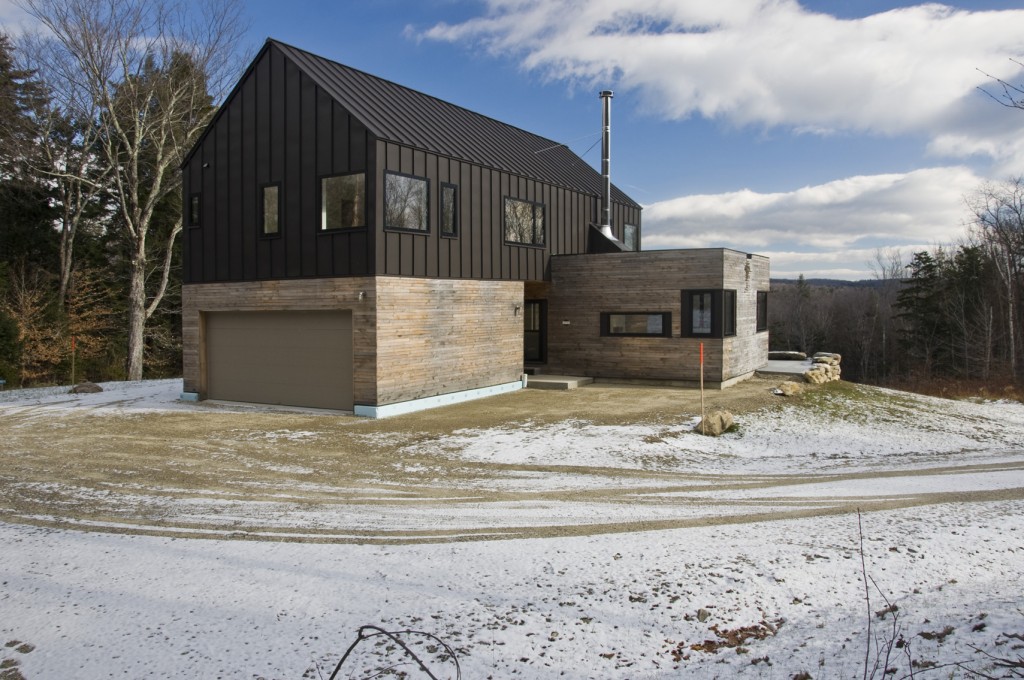
not so deep energy retrofit
Here are some photos from a current project. The interior of the exterior walls are all gutted and exposed for new insulation and air sealing. We are not going for a deep energy retrofit here but the end result should cut the energy use significantly. This is an old house with various interventions over the years, some of which we are removing and some we are changing. This is an example of a project where I was hired to help out with some basic design services but every time I showed up on the job, more of the existing was removed and opened up. A moving target in terms of "scope of work". At this point I am just trying to keep up with things on paper and am acting more as a consultant. I suspect when all is said and done, a lot of this isn't going to end up on paper.
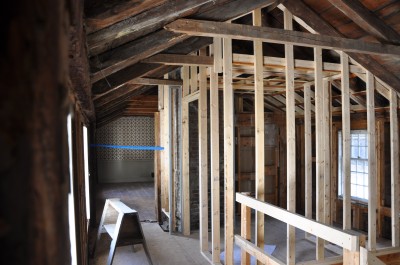

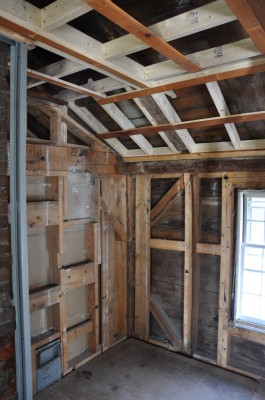 Old, very old and new framing
Old, very old and new framing
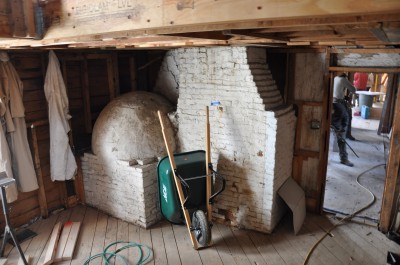 the Backside of the oldest fireplace now exposed.
the Backside of the oldest fireplace now exposed.
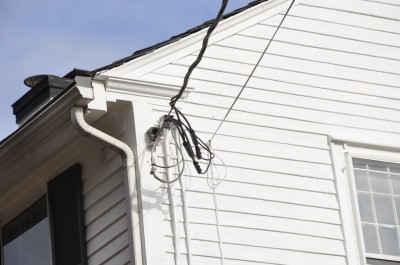 Interesting eave detail -no rake overhang, the crown returns on the horizontal and there is a big ugly box to mount the gutter too
Interesting eave detail -no rake overhang, the crown returns on the horizontal and there is a big ugly box to mount the gutter too
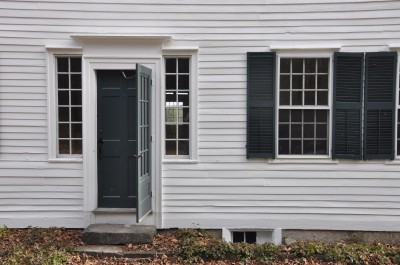 Front door and window detail on the main house
Front door and window detail on the main house
Wisconsin Fern House
GateKeepers Cottage
Sort ofThis is a schematic design for a local project I'm working on where I am doing master planning up front. See this post. After meeting with Gary MaCarthur to look at the whole site and master plan in terms of solar potential - the owners may, at least initially be "off the grid" - it was clear that the best locations for the house and barn were not so great for photovoltaics. Gary, like many other folks who design and install PV, like a clean simple installation, Ideally on the steeply pitched roof of a shed where the equipment can be housed. "a Power House". I knew the owners wanted to be able to spend weekends on the site year round and be comfortable and we had discussed building the barn first and finishing off the upstairs. Not a great solution unless you are prepared to build a fairly expensive barn as opposed to a pole barn for equipment and animals. Gary, upon listening to the master plan, long term build-out goals, suggested a cottage instead which could eventually become a guest house but in the meantime would serve as compact living quarters, the power house and storage for a tractor and whatever things get left here on a more permanent basis initially. being relatively small, a cottage could fit nicely into the overall site plan in a location ideal for photovoltaic panels.
As usual lately, I'm trying for the holy grail on this one and I hope the clients like the ideas. Holy Grail = Competitive cost Passive house priciples of low energy use, durable design and good building science local materials wherever possible and minimal environmental impact of materials Logical construction methods – nothing complicated or fancy Simple modern design – Scandinavian-ish? Clues from tradition but not a slave to it. - No Anachronism - use what works and eliminate frippery Texture and light and air Shadow and light. Intimately tied to the land. Seasonally adaptive and responsive Low maintenance – no or minimal exterior paint, stain , varnish – weathering materials and durable materials Emotionally uplifting space Proportion and grace.
Specifically to this project the long design seems to work best in terms of what we want to do with the site, the available roof for solar, the idea of layering, keeping the roof sheltering and low at the eave, build part now/part later if needed to get power set up, the gardeners cottage / gatehouse idea, overall simplicity, steep roof (Gary says to max winter gains) etc. I was also looking at cladding materials in more of a fabric sense with varying degrees of transparency which seems very Japanese and works very well for how I design wall systems.
Here is the initial sketch from my sketchbook:
Southern Vermont Classic Addition - new photos
Here are some photos from a recent project. This is an addition to a huge old barn which had a fairly recent Timberpeg addition to it. I did some work with the addition plus a larger new addition in a Greek Revival style with wrapping porches to create a more cohesive whole (and add a bunch of space) The addition is framed with double stud walls and super-insulated. Windows are triple glazed double hung. Fiber cement siding over rainscreen.Enjoy.
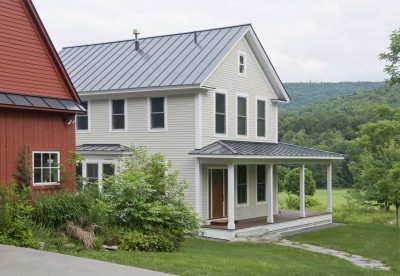
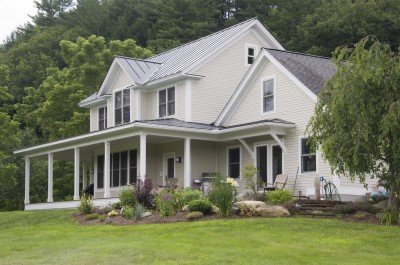
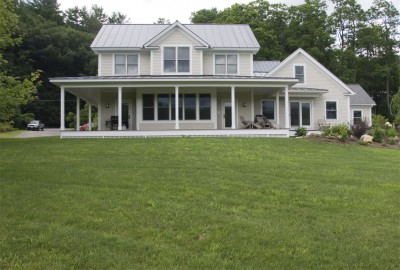
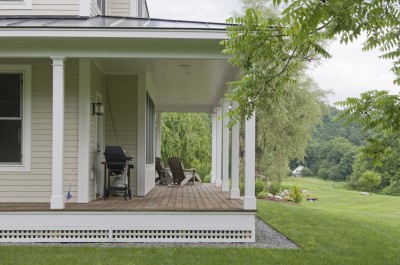
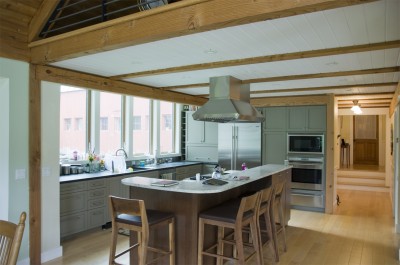
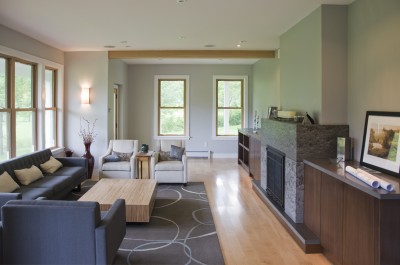 href="http://swinburnearchitect.com/wordpress/wp-content/uploads/2013/07/R1.jpg">
href="http://swinburnearchitect.com/wordpress/wp-content/uploads/2013/07/R1.jpg">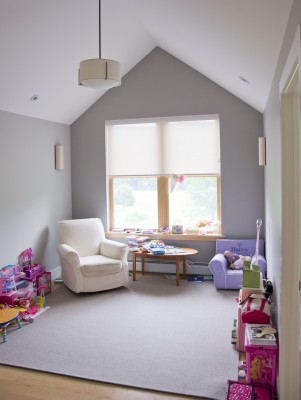
Fern House - short movie
Guy Manly, a New York based creative film company filmed me and the Fern House in Vermont last fall. Check it out
Pre-Design as an initial feasibility study
I often need to spend minimal time - 10 to 20 hours at my hourly rate - to do a simple master planning/feasibility study to explore what can be done to an existing house and if it's worth it. This process includes measuring existing conditions as much as is needed, photos, a thorough initial client meeting, thinking, sketching, some schematic design, modeling, more thinking, writing lists and generally trying to pare down the simplest solution to the client's goals. The result is a .pdf file which attempts to get all this down in a clear format which can be given to a builder for feedback and a VERY rough costing on the various parts and options. I have been assured by other architects that I am ridiculously fast at this in terms of total time spent. Projects often don't progress past this stage as clients realize that it would cost more to achieve what they want than they are able to spend. Or the project gets pared down at this early stage. It is a very useful exercise in saving money by spending some on the architect up front. It seems to be a good graphic way to quickly get a handle on the whole project without committing much in terms of $ from the client or time from me. Here are some examples of three recent projects.
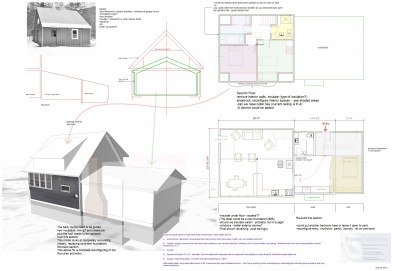
Schematic for Studio over garage and mudroom addition
Some images from the model. Of course I don't think the clients can afford it but it's a good starting point. This is a one car garage with a studio space above it, a rear yard screen porch and a mudroom connecting all these. We can treat the addition as a separate unit from the existing house itself by building it to passive house standards and heating it (and cooling it) with a simple mini split heat pump. or we could ignore the cooling aspect and use a very small amount of electric heat.
